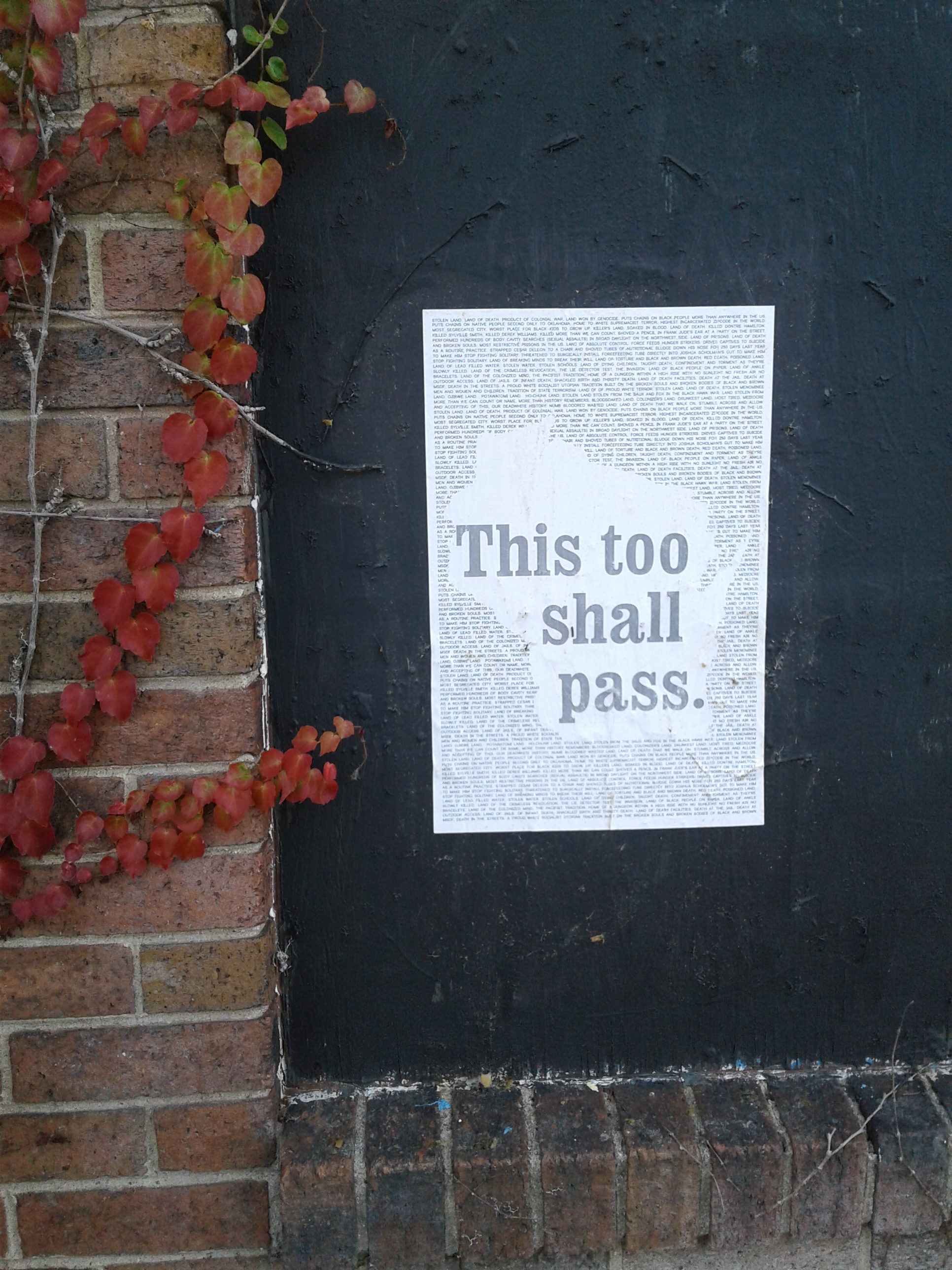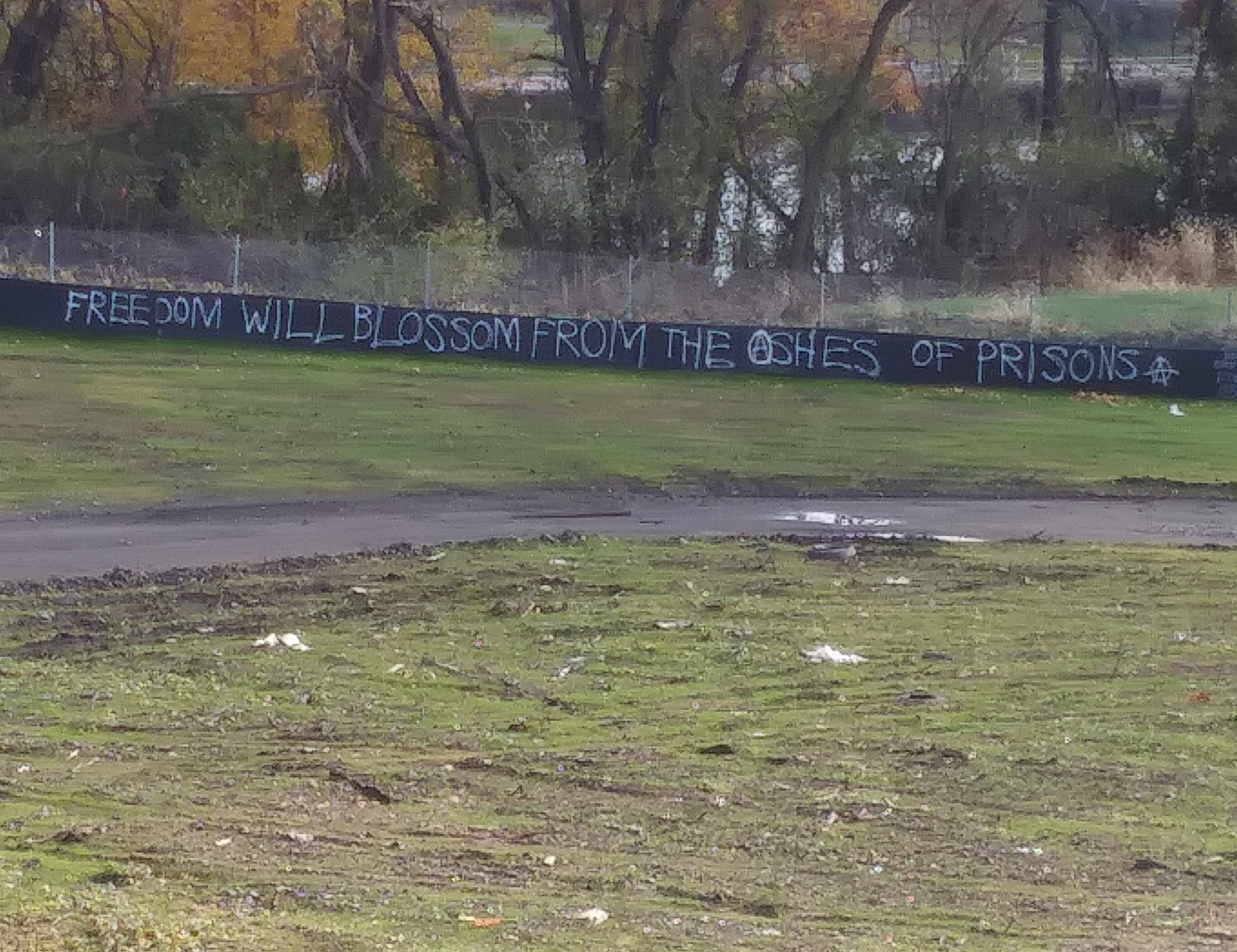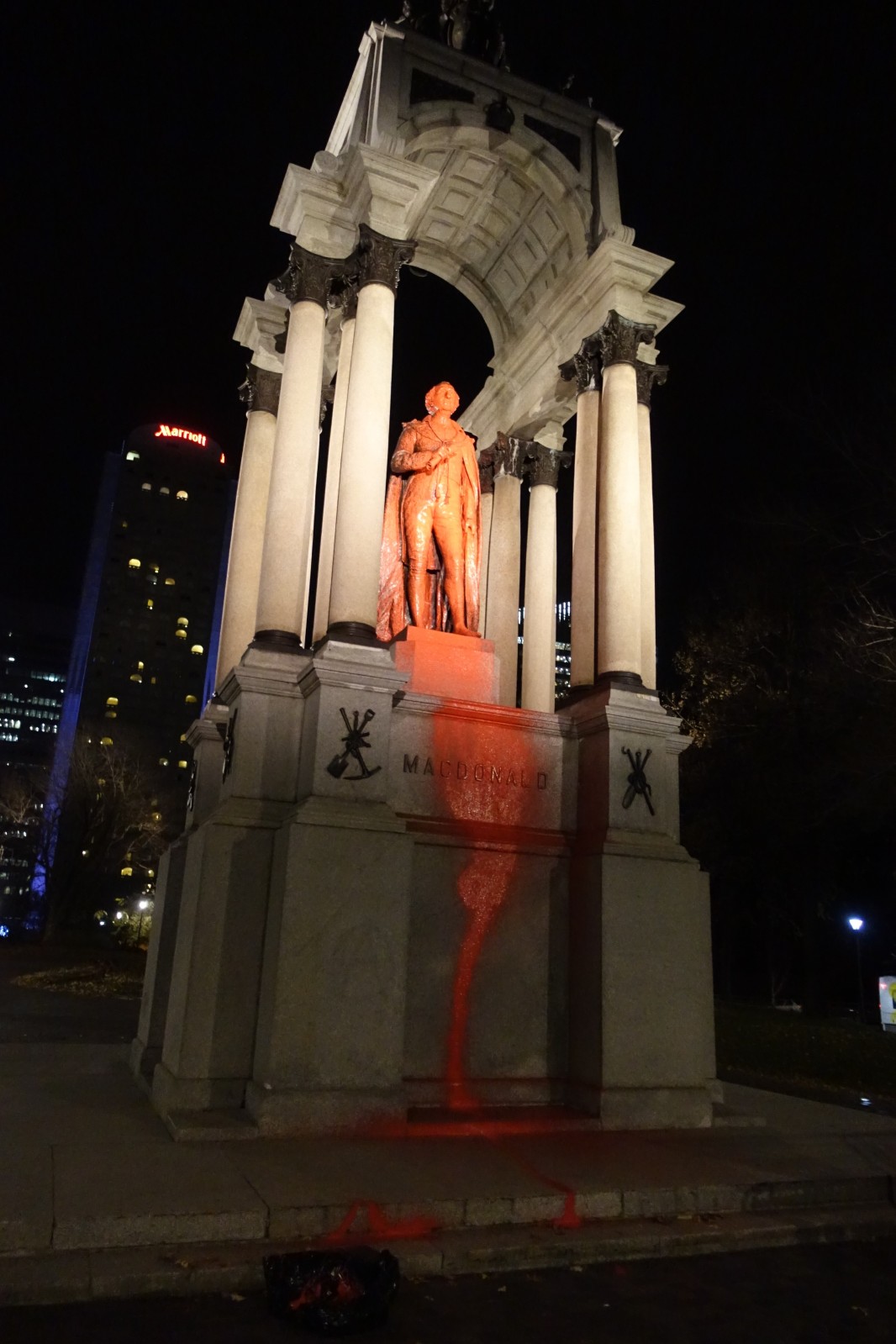Filed under: Vandalisms
The first of the J20 trials have just gotten under way, which should serve as a reminder that the above legal strategy is not to be taken seriously in any capacity. If “No face, no case” is your benchmark of security culture, it’s time to up your game, friend. Often, security is dismissed in order to get the most likes on social media. There are plenty of safe(r) ways to show off your work, but maybe the first thing you should do is not say it’s your work. Lots of literature on security culture exists out there, check it out so we don’t have to re-type it all on this post.
Speaking of J20 trials, there have been a fair share of tags dedicated to the case.
https://twitter.com/ciccmaher/status/928366087854526465
While the legal system is designed to put people on the defensive, to drain them and their resources, small acts of solidarity like this allow us to retake the initiative.
Hey, you—you did click the link up there to read about security culture right? You didn’t just blow right past it to get to some hot tags did you? I didn’t think so.
In Quebec City, a call was put out by francophone Liaisons that we feel worth reprinting in its entirety (translated by Montreal Counter-Info):
You Have to Start Somewhere
In recent days, weeks, and months, new posters and other tags have made their appearance in the territory of Quebec City, visible signs of people who have made the bet of linking themselves to the world by leaving their mark on the walls of the city.
Whether we know their identity makes no difference to us. Liaisons [Connections] is the mask by which they become anonymous to power and open to the world; the reflexive and informative tip of the iceberg. What matters to us are connections created in the fault lines of power and actions to expand them.
This is why we’re making a call
We make a simple call: let’s multiply our presence everywhere in the territory. Everywhere, let’s multiply the fault lines. This way, there is no limit to our praxeological imagination. And why not begin with the walls? We’re starting a mural poetry contest in so-called Quebec City! Pictures received by email will be published directly on the website of Liaisons.
Let’s use this occasion to re-learn the habit and experience of acting together in the moonlight. Let’s light up the night with a thousand fires!
Watch out for the cops! One should act quickly, watch one’s surroundings, monitor all the “citizens” who would like to play the heroes of private property (despite this happening rather rarely). We’re never too forward-looking or cautious. If you want a piece of advice or two, from our experience:
- Taxis are the worst snitches, one should avoid them like the police.
- If you take photos of your work yourself, use tools like exiftool, which allow you to erase data like the device’s location and model.
- Sometimes, if we’re expected at night, the best time may be early in the morning or even, with the right tools (stencil and a bag to conceal it), and depending on the spot, in the middle of the day.
Let’s go!
Like Liaisons, we are uninterested in the identities behind the graffiti, whether the literal identity of the writers or their political identities. What we mean is, while we love explicitly anarchist graffiti, everyone who puts paint where it ain’t is making a contribution to an ungovernable reality (with a few exceptions, no doubt).
https://www.instagram.com/p/BbtJPT7D2KM/?taken-by=a_waywardhorror
Graffiti tags appear “apolitical” and are generally perceived as a nuisance by vast segments of the population (even some who would appreciate a tagged slogan that “means something”). Yet it is precisely this illegibility that makes them powerful. There is no “meaning” in a direct sense, no message to be heard by those in power to make it stop, just a simple reminder that people will always feel driven to destroy what this society works so hard to create. This lack of direct meaning also makes it hard to pick out good photos to share here without an explicitly political message, but we intend to include more in the future.
"Burn Condos, Rob Yuppies" KIN graffiti spotted by Franklin Ave in Minneapolis pic.twitter.com/QdvOeCuaeT
— Conflict Minnesota (@conflictMN) November 19, 2017
https://www.instagram.com/p/BbIggzAl37m/?taken-by=streets_of_sacto
This of course isn’t to say that political graffiti isn’t as good—obviously it is the bulk of what we’ve covered! Sometimes our enemies need to know exactly what we think of them.
KFC condos on Valencia. pic.twitter.com/vI34zcX8lC
— Capp Street Crap (@cappstreetcrap) November 25, 2017
More importantly, political graffiti is a way for potential accomplices to see that someone else is out there that also hates yuppies, cops, etc. It exposes potential fault lines in society and suggests possibilities of action. Graffiti is a common component of anti-gentrification struggles because of how it directly effects property values. For example, it only took days after a new coffee shop in Denver bragged about gentrifying their neighborhood for someone to tag their storefront (and crack their window too).
But these gestures need not be so grand. Even the smallest white out tag says that control will never be total. A “Fuck Cops” scribbled on a street pole still signals to someone that resistance is possible. Ten “Fuck Cops” tags across a few city blocks signals that at least some folks in that area aren’t too fond of police, and might make someone think twice about calling them. In a graffiti communique posted to Conflict MN:
I love finding these little acts of rebellion that disrupt our views as this empire crumbles. With the Super Bowl around the corner, the city plans to turn the streets into a “clean zone” and a massive police state security zone. Let’s use what we can to continue to disrupt the view with tags, banners, flyers, stickers, paint, and all forms of unauthorized art to remind them we live here!
This isn’t about a linear escalation of vandalism that will single-handedly “make racists afraid again”, but an intervention in the visual space as one part of a multifaceted struggle.
This is also why anti-fascists make propaganda a large component of their work. If a fascist can put up a sticker and that sticker can stay up, it means that they’ve found a space where they don’t face any immediate enemies and can feel relatively safe. Making sure fascist propaganda is taken down as soon as possible mitigates this, and replacing it with anti-fascist propaganda has the opposite effect: it reminds them they aren’t safe.
In response to a white nationalist flyering campaign on the ASU campus, some people took it upon themselves to round up and destroy the fascist materials and beautify the campus with antifascist posters of their own, along with a mosaic for Santiago Maldonado. #SantiagoPresente pic.twitter.com/MiLMgkf25A
— Occupied Southwest Distro (@OccupiedSW) November 10, 2017
Don’t just stand by and cede valuable ground on the streets to fascists and assorted reactionary idiots. If you need bulk copies of posters, propaganda, or other prints, let us know and we can work something out, on the low. Occupied.southwest@protonmail.com pic.twitter.com/5Sp4b0S3CX
— Occupied Southwest Distro (@OccupiedSW) November 10, 2017
Last night, posters reading "IMMIGRANTS WELCOME, RACISTS FUCK OFF" went up throughout Atlanta. pic.twitter.com/A9pT8ol79l
— Atlanta Antifascists (@afainatl) November 27, 2017
https://www.instagram.com/p/BbxbwR1BXP0/?taken-by=detroit_graffiti_

Lastly, we want to shout out some cool stuff of interest to those who enjoy this column. Philly Anti-Capitalist has a round-up similar to some posts we recommended last month, collecting graffiti seen around the city.

La Rue Ou Rein is a french blog that has been doing this exact thing for a long time! It is only due to our forgetfulness that they were not included last time.
Nantes #manif16novembre (photo : Suvann)https://t.co/dEZhbQDEsd pic.twitter.com/DVvW8S337h
— la rue ou rien (@larueourien1) November 16, 2017
Montreal Counter-Info also collects photos of graffiti on their website, in addition to often hosting communiques from actions involving vandalism.







